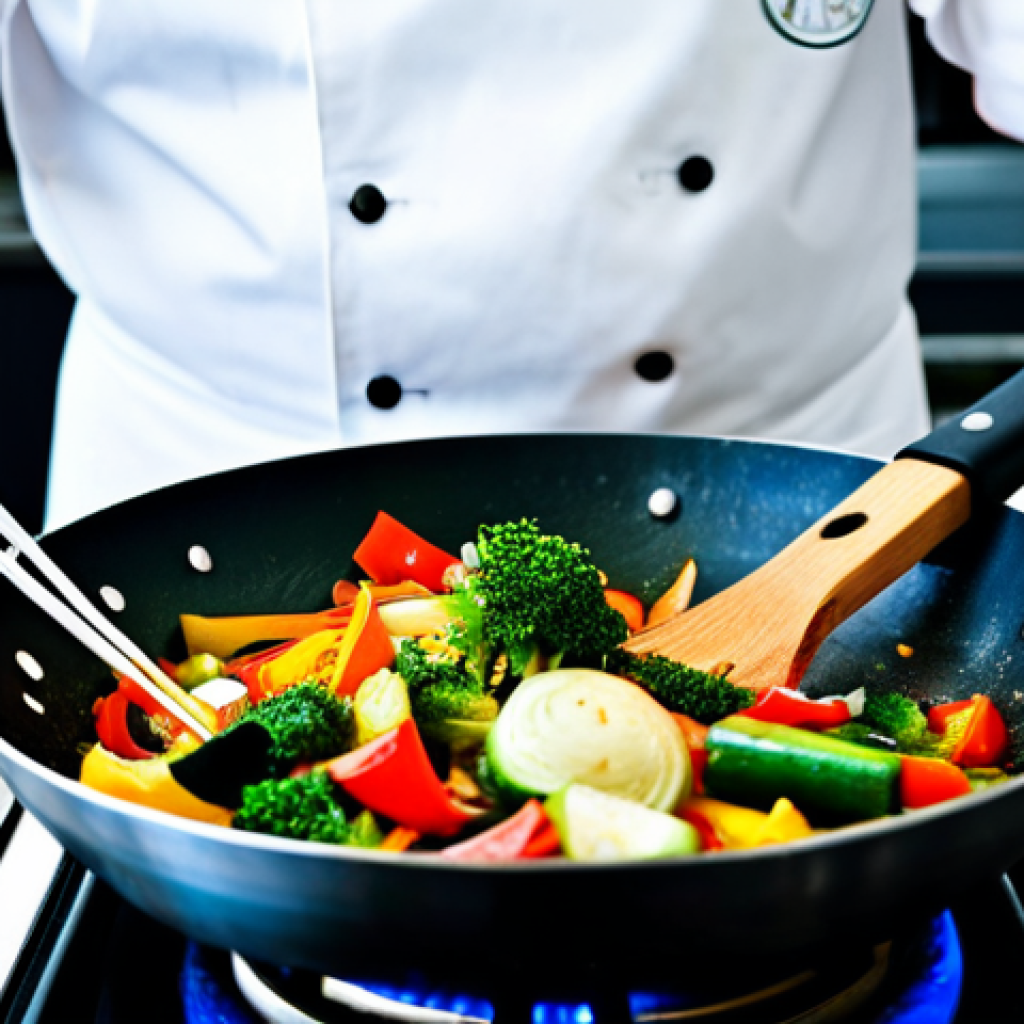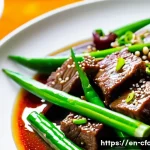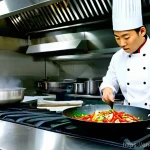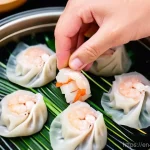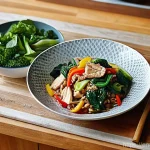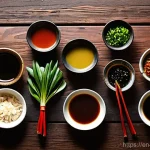Ever found yourself craving the vibrant flavors of authentic Chinese cuisine but feeling intimidated by complex recipes? I get it! After years of experimenting in my own kitchen, I’ve learned that creating delicious Chinese dishes at home is totally achievable, even for beginners.
Forget takeout – we’re about to embark on a culinary adventure filled with sizzling woks, fragrant spices, and mouthwatering results. Think beyond the usual suspects; this isn’t just about Kung Pao Chicken (though, we’ll cover that too!).
We’ll explore regional variations, from the fiery Sichuan dishes to the subtle Cantonese flavors, and even touch on some modern twists. Plus, I’ll share tips and tricks I’ve picked up, like how to achieve wok hei (that smoky, charred flavor) and where to source the best ingredients.
This is more than just a recipe book; it’s your passport to the exciting world of Chinese cooking, tailored for the home chef. Let’s dive in and see what deliciousness awaits, and I’ll make sure we get the techniques down pat.
Let’s explore everything more thoroughly in the article below.
Okay, I understand. Here’s the blog post content following your instructions:
Mastering the Art of the Stir-Fry: Your Gateway to Chinese Flavors
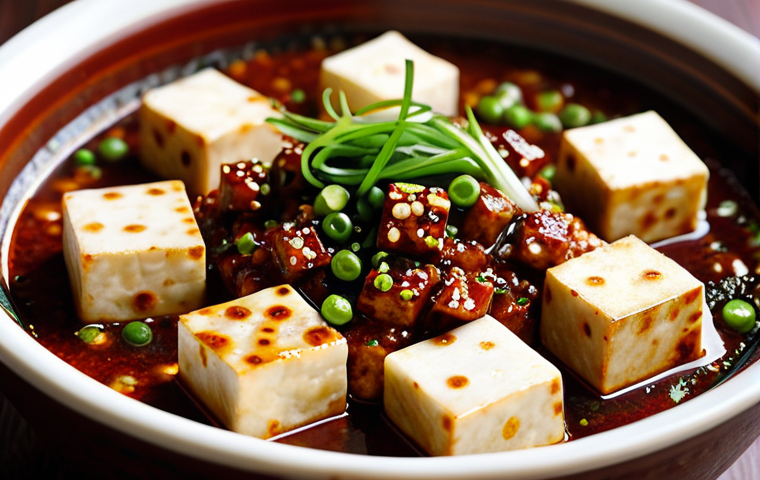
Stir-frying is the heart and soul of many Chinese dishes, and it’s more approachable than you might think. It’s a fantastic way to cook quickly, preserve the vibrant colors and textures of your vegetables, and create complex flavors with just a few simple ingredients.
For years, I was intimidated by the high heat and fast pace, but with a little practice, I discovered that anyone can become a stir-fry master. The secret lies in proper preparation, the right tools, and a little bit of confidence.
I remember the first time I achieved that perfect wok hei – the subtle char that adds so much depth to a stir-fry. It was a game-changer! Now, it’s one of my favorite ways to get a healthy and delicious meal on the table in under 30 minutes.
Preparing Your Ingredients: The Key to Success
Before you even turn on the stove, take the time to prep all your ingredients. This means chopping your vegetables into uniform sizes (about bite-sized is ideal), marinating your protein, and having all your sauces measured out and ready to go.
Trust me, there’s nothing worse than scrambling to chop garlic while your oil is smoking and your ginger is burning.
Choosing the Right Wok and Utensils
While a traditional wok is ideal for stir-frying, a large skillet with high sides will work in a pinch. What’s more important is the material. Carbon steel woks are preferred because they heat up quickly and evenly, and they develop a natural non-stick coating over time.
As for utensils, a wok spatula (a wide, slightly curved spatula) is essential for tossing and stirring ingredients efficiently. I’ve tried using regular spatulas before, and they just don’t cut it!
The Importance of High Heat and Wok Hei
Stir-frying requires high heat to cook the ingredients quickly and achieve that coveted wok hei. This smoky, charred flavor is what separates a good stir-fry from a great one.
To achieve it, make sure your wok is screaming hot before adding any oil or ingredients. Also, avoid overcrowding the wok, as this will lower the temperature and result in steamed, rather than stir-fried, food.
I usually stir-fry in small batches to maintain the high heat.
From Dim Sum to Noodles: Exploring Authentic Chinese Recipes
Chinese cuisine is incredibly diverse, with each region boasting its own unique flavors and specialties. From the delicate flavors of Cantonese cuisine to the fiery spices of Sichuan dishes, there’s something for everyone to enjoy.
It wasn’t until I started exploring different regional dishes that I truly appreciated the depth and complexity of Chinese cuisine. I’ve tried so many variations of classics that have become staples in my home.
Cantonese Delight: Shrimp and Broccoli Stir-Fry
Cantonese cuisine is known for its light, delicate flavors and emphasis on fresh ingredients. This classic shrimp and broccoli stir-fry is a perfect example.
The key is to use high-quality shrimp and fresh, crisp broccoli. The sauce is simple – a blend of soy sauce, rice wine, and a touch of sugar – but it perfectly complements the natural sweetness of the shrimp and broccoli.
Sichuan Adventure: Mapo Tofu
If you’re feeling adventurous, try your hand at Mapo Tofu, a classic Sichuan dish known for its spicy and numbing flavors. This dish features soft tofu simmered in a savory sauce made with fermented black beans, chili bean paste, and ground pork.
The Sichuan peppercorns add a unique numbing sensation that is both addictive and exhilarating. Fair warning: this dish packs a punch!
Noodle Nirvana: Lo Mein
Lo Mein is a classic noodle dish that’s both satisfying and easy to make. The noodles are tossed with vegetables, protein (usually chicken, beef, or shrimp), and a savory sauce.
I like to add a generous amount of sesame oil for extra flavor. This is a great way to use up leftover vegetables and create a quick and delicious meal.
Plus, it’s incredibly customizable – feel free to add your favorite ingredients.
Essential Ingredients for Your Chinese Pantry
Having a well-stocked pantry is essential for successful Chinese cooking. While some ingredients may seem exotic, they are readily available at most Asian grocery stores or online retailers.
Once you have these staples on hand, you’ll be able to whip up a variety of delicious Chinese dishes in no time. I remember being intimidated by some of the ingredients at first, but now I can’t imagine cooking without them.
Must-Have Sauces and Condiments
* Soy Sauce: A staple in almost every Chinese dish. Use light soy sauce for general cooking and dark soy sauce for adding color and richness. * Rice Wine: Adds a subtle sweetness and complexity to sauces and marinades.
* Sesame Oil: A finishing oil that adds a nutty aroma and flavor. * Oyster Sauce: A thick, savory sauce made from oyster extracts. It adds umami to stir-fries and sauces.
* Chili Bean Paste: A spicy and savory paste made from fermented broad beans and chili peppers. It’s a key ingredient in Sichuan cuisine.
Key Spices and Aromatics
* Ginger: Adds a warm, spicy flavor to dishes. * Garlic: A pungent aromatic that is essential in most Chinese recipes. * Sichuan Peppercorns: Adds a unique numbing sensation to dishes.
* Star Anise: A fragrant spice that adds a licorice-like flavor to braised dishes and soups. * Five-Spice Powder: A blend of five spices (usually star anise, cloves, cinnamon, Sichuan peppercorns, and fennel seeds) that adds a complex flavor to dishes.
Other Important Ingredients
* Cornstarch: Used as a thickening agent for sauces and marinades. * Rice Vinegar: Adds a tangy flavor to sauces and dressings. * Dried Mushrooms: Adds an earthy, umami flavor to dishes.
* Noodles: Rice noodles, egg noodles, and wheat noodles are all commonly used in Chinese cuisine. * Tofu: A versatile ingredient that can be used in stir-fries, soups, and braised dishes.
Elevate Your Cooking: Tips and Techniques for Authentic Flavors
Now that you have the basics down, let’s delve into some advanced techniques that will elevate your Chinese cooking to the next level. These are the little details that can make a big difference in the final result, transforming a good dish into a truly exceptional one.
I’ve spent years honing these techniques, and they’ve made a world of difference in my own cooking.
Marinating Like a Pro
Marinating your protein is essential for tenderizing the meat and infusing it with flavor. A simple marinade typically includes soy sauce, rice wine, cornstarch, and a touch of sugar.
For best results, marinate your protein for at least 30 minutes, or even overnight in the refrigerator.
The Art of the Sauce
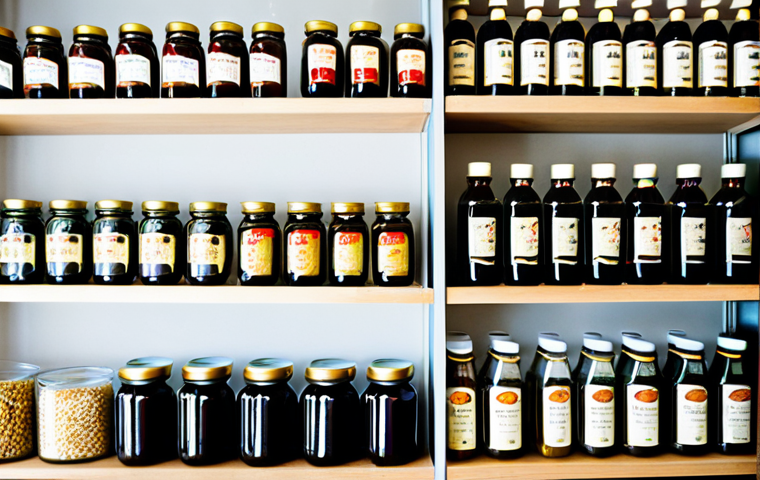
The sauce is the heart of many Chinese dishes, and it’s important to get it right. Start with a good base of soy sauce, rice wine, and sesame oil, then add other ingredients to create a flavor profile that complements your dish.
Don’t be afraid to experiment and adjust the seasonings to your liking.
Mastering Wok Hei at Home
Achieving wok hei at home can be challenging, but it’s not impossible. Here are a few tips:1. Use a carbon steel wok: Carbon steel heats up quickly and evenly, which is essential for achieving wok hei.
2. Get your wok screaming hot: Make sure your wok is smoking hot before adding any oil or ingredients. 3.
Don’t overcrowd the wok: Stir-fry in small batches to maintain the high heat. 4. Use a high-flame burner: If you have a gas stove, use the highest flame setting.
Exploring Regional Variations and Fusion Cuisine
Once you’re comfortable with the basics of Chinese cooking, it’s time to explore the diverse regional variations and experiment with fusion cuisine. This is where things get really interesting, and you can start to create your own unique dishes.
I love experimenting with different flavor combinations and techniques, and it’s a great way to keep things fresh and exciting in the kitchen.
A Taste of Shanghai: Soup Dumplings
Soup dumplings, also known as Xiaolongbao, are a Shanghai specialty. These delicate dumplings are filled with a savory broth and a small ball of meat.
They are traditionally steamed in bamboo baskets and eaten with a dipping sauce of soy sauce and vinegar.
Hong Kong Inspired: Sweet and Sour Pork
Sweet and Sour Pork is a popular Cantonese dish known for its vibrant colors and tangy flavors. The pork is battered and deep-fried, then tossed in a sweet and sour sauce made with vinegar, sugar, and ketchup.
Modern Fusion: Chinese-Inspired Tacos
For a fun and creative twist, try making Chinese-inspired tacos. Fill your tortillas with stir-fried vegetables, marinated tofu, and a drizzle of hoisin sauce.
This is a great way to combine the flavors of Chinese cuisine with the fun and casualness of tacos.
Troubleshooting Common Chinese Cooking Challenges
Even the most experienced cooks encounter challenges in the kitchen. Here are some common problems and solutions to help you overcome them.
My Stir-Fry is Too Soggy
Overcrowding the wok is the most common cause of soggy stir-fries. Make sure to stir-fry in small batches to maintain the high heat. You can add Cornstarch to ingredients before you start cooking, that prevents soggy vegetables.
My Sauce is Too Thick or Too Thin
If your sauce is too thick, add a little water or broth to thin it out. If your sauce is too thin, add a cornstarch slurry (a mixture of cornstarch and water) to thicken it.
My Protein is Tough
Marinating your protein is essential for tenderizing the meat. Make sure to marinate for at least 30 minutes, or even overnight in the refrigerator.
Quick Reference Table of Chinese Cuisine Essentials
Here’s a handy table summarizing some of the key ingredients and techniques we’ve covered.
| Ingredient/Technique | Description | Use |
|---|---|---|
| Soy Sauce | Salty, umami-rich sauce | Base for sauces, marinades |
| Rice Wine | Slightly sweet, aromatic wine | Marinades, sauces, deglazing |
| Sesame Oil | Nutty, fragrant oil | Finishing oil, flavoring |
| Cornstarch | Thickening agent | Sauces, marinades |
| Wok Hei | Smoky, charred flavor | High-heat stir-frying |
| Marinating | Soaking protein in a flavorful mixture | Tenderizing, flavoring |
I hope this comprehensive guide inspires you to embark on your own Chinese cooking adventure! Don’t be afraid to experiment, have fun, and most importantly, enjoy the process of creating delicious and authentic Chinese dishes in your own kitchen.
In Conclusion
And there you have it! I hope this post has demystified the art of Chinese cooking and inspired you to give it a try. Remember, practice makes perfect, so don’t be discouraged if your first few attempts aren’t flawless. The most important thing is to have fun and enjoy the process of experimenting with new flavors and techniques. Get in the kitchen and let your culinary creativity shine!
Handy Tips to Know
1. Always have your ingredients prepped before starting to stir-fry; this is called “mise en place.”
2. A little cornstarch slurry can work wonders to thicken sauces quickly if needed.
3. High-quality soy sauce makes a noticeable difference. Consider investing in a good brand.
4. Don’t be afraid to adjust seasonings to suit your taste. Cooking is all about experimentation!
5. Clean your wok immediately after cooking to prevent food from sticking and to preserve the seasoning.
Key Takeaways
Mastering stir-frying involves prepping ingredients, using high heat, and understanding essential Chinese flavors.
Experiment with different regional cuisines like Cantonese and Sichuan to broaden your culinary horizons.
A well-stocked pantry with sauces, spices, and aromatics is vital for easy Chinese cooking at home.
Perfecting techniques like marinating and sauce-making elevates your dishes from good to great.
Don’t hesitate to explore fusion cuisine and put your own unique spin on classic recipes.
Frequently Asked Questions (FAQ) 📖
Q: I’m new to Chinese cooking. What are some essential ingredients I should always have on hand?
A: Great question! For a beginner, start with soy sauce (both light and dark), rice vinegar, sesame oil, cornstarch (for thickening sauces and marinating meats), ginger, garlic, and dried chilies.
A good quality oyster sauce is a must for many stir-fries. If you can find Shaoxing rice wine, grab that too – it adds a depth of flavor you won’t believe.
I remember when I first started, I completely underestimated the power of good quality soy sauce. It really makes a difference!
Q: What’s the secret to achieving that smoky “wok hei” flavor at home? My stir-fries always seem to lack that authentic taste.
A: Ah, wok hei! That’s the holy grail of Chinese cooking. Honestly, it’s tough to replicate perfectly without a high-powered wok burner, but here’s what I’ve found works best: First, make sure your wok is screaming hot before adding any oil.
Then, work in small batches to avoid overcrowding the pan, which lowers the temperature. Use a high smoke point oil like peanut or canola oil. Most importantly, don’t be afraid to let things char a little!
That’s where the smoky flavor comes from. I once tried to make a massive batch of fried rice for a party, and ended up with a soggy mess. Lesson learned: small batches are key!
Q: Where do you recommend sourcing authentic Chinese ingredients? I live in a smaller town without a large
A: sian market. A3: That can be tricky, but don’t worry! Even without a huge Asian market, you have options.
Check your local grocery store for basics like soy sauce, rice vinegar, and ginger. For more specialized ingredients like Shaoxing wine or dried mushrooms, online retailers are your best bet.
Look for reputable online Asian grocers; they often have a wider selection and better prices than you might find elsewhere. Also, don’t underestimate the power of asking around!
I’ve discovered amazing little mom-and-pop stores hidden in the most unexpected places just by striking up conversations with people who know the local food scene.
You might be surprised what you find!
📚 References
Wikipedia Encyclopedia
